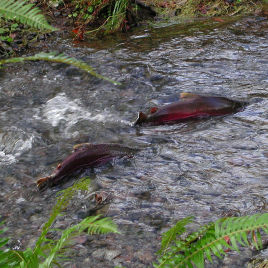Salmon living in tanks with darker backgrounds are typically less aggressive than those living in a lighter coloured environment, according to new research. The researchers divided 100 Coho Salmon into 10 different tanks, each with different colour patterns, and monitored their behaviour. They found that the salmon prefered the darker areas, and were less aggressive […]
Tag: agriculture
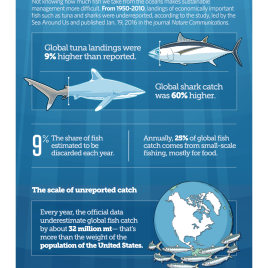
Underestimating global fisheries catches
Researchers have been substantially underestimating the total global fisheries’ catches by as much as 50 per cent, according to a new study. The results are based on “catch-reconstruction”, using scientific literature and asking local experts to help provide missing data. The researchers found increases in catches every year from 1950 to 1996, at which […]
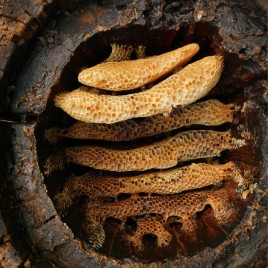
Ancient farming bee-haviour
Researchers have found evidence that humans have been gathering bee products, such as honey and honeycomb, for at least 9,000 years. The researchers examined residues preserved on thousands of pottery vessels from across Europe, North Africa, and Asia. The earliest evidence was found in pots from Neolithic sites in Anatolia, where Europe and Asia join, […]
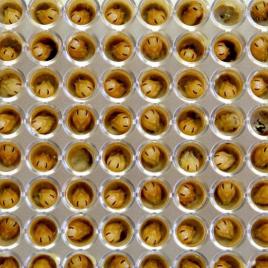
Farming fungus: A new bee-haviour
An accident in the lab has lead to the discovery that a specific species of bee, native to Brazil, farms fungus for their larvae to eat. This finding raises concerns about the use of fungicides in agriculture. Researchers made the discovery while attempting to breed queen bees, but found white fungus growing out of control, […]
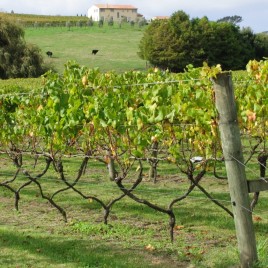
How a wine gets it’s unique flavour
The terroir of a wine, or the flavour that arises from the environment in which it’s produced, is affected by the types of microbe in the vineyard and the yeasts used during the fermentation process according to a new study. Using six genetically different populations of a microbe, S. cerevisiae, from six wine growing regions, […]
Synthetic nutrients and GMOs
Researchers have developed genetically modified organisms (GMOs) that depend on synthetic nutrients to survive. Two teams, one from Yale University and another from Harvard, tweaked the genetic code of modified bacteria whose growth is restricted by the expression of multiple essential genes that depend on synthetic amino acids, the building blocks of proteins. When the […]
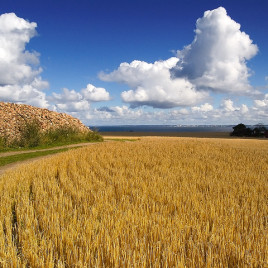
Defending durum wheat against Fusarium Head Blight
Researchers may have found the key to protecting durum wheat from Fusarium Head Blight (FHB), which leaves it unsuitable for human consumption or livestock feed. Common wheat has been bred to develop a resistance to this fungal disease, however durum wheat, which is used to create pastas, has no defence against it. Researchers analyzed two […]
Fighting malnutrition with ‘stronger’ chickpeas
Researchers have determined which genetic variations influence the iron and zinc concentrations in chickpea seeds, a finding that could help fight malnutrition in developing countries. The study examined 94 varieties of chickpea and found eight genetic variations – known as single nucleotide polymorphisms, or SNPs – that are associated with the iron and zinc concentration. Breeding […]
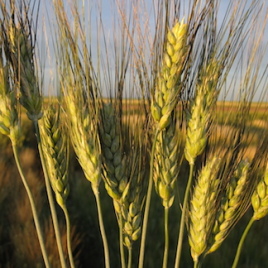
Towards carbon neutral wheat production
Improved practices in the farming of wheat could lead to a significant reduction in its carbon footprint according to a new study. With the changes suggested by the researchers, the carbon footprint of wheat could potentially be lowered to the extent that it removes more carbon dioxide from the atmosphere than is emitted during production. The […]
How to reduce damage from unregulated fisheries
Canadians are used to the idea that governments regulate fisheries, but around the world more than 100 million people – 90 per cent of the worlds’ fishers – operate in small-scale fisheries with no records or controls. In a Policy Forum article, the authors recommend methods to reduce the damage that illegal, unregulated and unreported […]
Climate change: cropland could expand in Canada
A new simulation of the impact of climate change on the supply of agricultural land shows that suitable cropland will expand in Canada, Russia, China and other countries in the high latitudes of the Northern hemisphere. On the other hand the authors project a significant loss of highly fertile cropland in the Mediterranean regions and […]
Calculating the impact of a “Green Revolution”
New research suggests that improving crop yields has reduced carbon emissions and land use worldwide, but that this might not be the case in the future. The “Green Revolution” refers to the use of fertilizers, pesticides and other agricultural technology to increase crop yields. Previous studies have shown that rather than decreasing the amount of land […]

Canola genome decoded
Scientists have decoded the genome of Brassica napus, the plant that gives us canola oil. Developed in the 1970s by researchers from the University of Manitoba, Agriculture and Agri-Food Canada (AAFC), and National Research Council (NRC) in Saskatoon (“canola” stands for CANadian Oil Low Acid) the crop has gained huge commercial importance. Because Brassica napus […]
Genetically-modified salmon reproduce as fast as wild-type
Growth hormone (GH) transgenic salmon doesn’t reproduce faster than wild-type salmon, but transgenic salmon can reproduce with wild-type fish, a new study shows. GH transgenic salmon contains a chinook salmon growth hormone gene fused to an ocean pout antifreeze gene which significantly accelerate its growth rates. Researchers reared salmon in large (350,000 L), semi-natural, seawater tanks […]
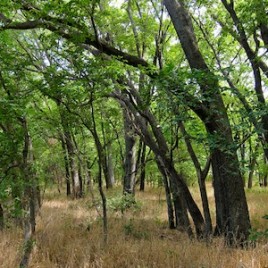
Are trees crowding out cows?
Livestock like beef cows can suffer when grasslands, shrublands and savannas shift to a more tree-covered landscape and new research has put a number on this effect. Using computer models the authors show that for every 1 per cent increase in tree cover, the number of reproductive cows per square kilometre drops by about 2 […]
Lighting the way for more tomatoes
Researchers have found a gene in a wild species of tomato that allows the plant to tolerate continuous light, potentially leading to a 20% yield increase in commercial varieties. One of the major limitations for crop productivity is the amount of light available each day but cultivated tomato plants often develop damaging leaf injuries when […]
